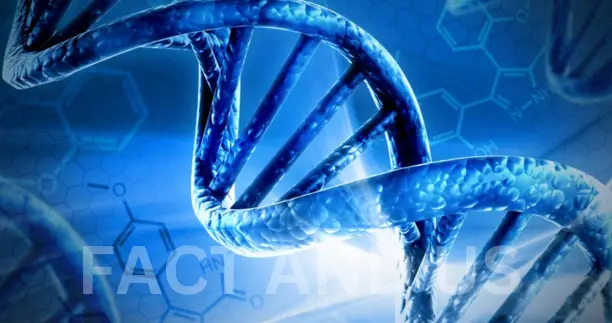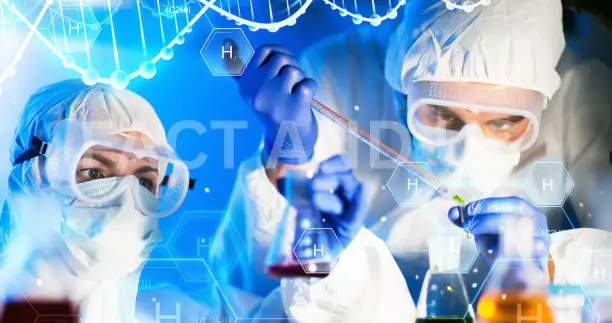Aging Medicine is an international collaboration and exchange platform for research in multiple disciplines relating to Geriatrics. We’re proud to be an open access journal with a global audience of biomedical researchers across the aging sciences. Content in Aging Medicine includes experimental/translational and clinical aging research, prevention medicine, palliative medicine, pharmacology and techniques applying to aging medicine. Aging can be defined as the time-related deterioration of the physiological functions necessary for survival and fertility. The characteristics of aging—as distinguished from diseases of aging (such as cancer and heart disease)—affect all the individuals of a species. Today’s healthcare challenges and tomorrow’s opportunity can only be met by those who search out deeper explanations of the body processes that generate health and disease. Life expectancy has increased due to advances in medical science. However it has come with little progress towards quality of life or the length of disease-free years in the majority of population.
Most researchers believe that maximum life span in human is slightly over 110 years. Beyond that age, the estimates and speculation enter the realms of science fiction.
Contents
Aging: The Biology of Senescence

Entropy always wins. Each multicellular organism, using energy from the sun, is able to develop and maintain its identity for only so long. Then deterioration prevails over synthesis, and the organism ages. Aging can be defined as the time-related deterioration of the physiological functions necessary for survival and fertility. The characteristics of aging—as distinguished from diseases of aging (such as cancer and heart disease)—affect all the individuals of a species.
Many evolutionary biologists (Medawar 1952; Kirkwood 1977) would deny that aging is part of the genetic repertoire of an animal. Rather, they would consider aging to be the default state occurring after the animal has fulfilled the requirements of natural selection. After its offspring are born and raised, the animal can die. Indeed, in many organisms, from moths to salmon, this is exactly what happens. As soon as the eggs are fertilized and laid, the adults die. However, recent studies have indicated that there are genetic components to senescence, and that the genetically determined life span characteristic of a species can be modulated by altering genes or diet.
GROWTH, DEVELOPMENT AND AGING

Old age is the most unexpected of all things that happens to man. –
Aging has been a fact of life ever since it was created. Human beings go through various phases of life from being child to youth to being adult with youth being the best part of life from health point of view. Good health, strong muscles, an efficient immune system, a sharp memory and a healthy brain are characteristic of ideal youth. The hormones work at their peak capacity during the youth years. Anti-Aging medicine aims to maintain or achieve this irrespective of chronological age i.e. to stay healthy and biologically efficient. The prestigious scientific journal, Biogerontology, defines aging as: “The progressive failing ability of the body’s own intrinsic and genetic powers to defend, maintain and repair itself in order to keep working efficiently. “We are now living in the information age. Medical knowledge is increasing at an amazing rate-doubling every three years. This doubling rate of information is progressively decreasing. The world is changing and so is the way we view our health and well being as we age.
Aging has been believed to be inherent, universal, progressive natural phenomenon. It is detrimental with no benefits except perhaps wisdom. But now there is a paradigm shift in looking at the aging process based on firmly documented evidence in medical and scientific literature. If we plot the health in y-axis and the number of years in x-axis, the curve of life is like a triangle which is skewed with its apex at 25-30 years. Anti-aging helps to make it rectangle. Many natural aging mechanisms frequently result in actual diseases. From this we can conclude that fighting an aging process may well bring about an improvement of an age related illness.
All animals or plants eventually show signs of aging even if they are in a protected environment. When we look at Ayurveda which prescribes plants or their components and extracts to fight against illness, one has to wonder why? Nature created these plant chemicals to help them protect against diseases or aging. Humans have later adapted these chemicals for their own use to increase their chances of maintaining their health.
Maximum Life Span and Life Expectancy
The maximum life span is a characteristic of the species. It is the maximum number of years a member of that species has been known to survive. The maximum human life span is estimated to be 121 years (Arking 1998). The life spans of tortoises and lake trout are both unknown, but are estimated to be more than 150 years. The maximum life span of a domestic dog is about 20 years, and that of a laboratory mouse is 4.5 years. If a Drosophila fruit fly survives to enclose (in the wild, over 90% die as larvae), it has a maximum life span of 3 months. However, a person cannot expect to live 121 years, and most mice in the wild do not live to celebrate their first birthday. The life expectancy, the amount of time a member of a species can expect to live, is not characteristic of species, but of populations. It is usually defined as the age at which half the population still survives. A baby born in England in the 1780s could expect to live to be 35 years old. In Massachusetts during that same time, the life expectancy was 28 years. This was the normal range of human life expectancy for most of the human race in most times. Even today, the life expectancy in some areas of the world (Cambodia, Togo, Afghanistan, and several other countries) is less than 40 years. In the United States, a child born in 1986 can expect to live 71 years if male and 78 years if female.
Given that in most times and places, humans did not live much past 40 years, our awareness of human aging is relatively new. A 65-year-old person was rare in colonial America, but is a common sight today. Some survival curves for female Homo sapiens in the United States are plotted in Figure 18.35. In 1900, 50% of American women were dead by age 58. In 1980, 50% of American women were dead by age 81. Thus, the phenomena of senescence and the diseases of aging are much more common today than they were a century ago. In 1900, people did not have the “luxury” of dying from heart attacks or cancers. These diseases generally occur in people over the age of 50 years. Rather, people died (as they are still dying in many parts of the world) from infectious diseases and parasites (Arking 1998). Similarly, until recently, relatively few people exhibited the more general human senescent phenotype: graying hair, sagging and wrinkling skin, joint stiffness, osteoporosis (loss of bone calcium), loss of muscle fibers and muscular strength, memory loss, eyesight deterioration, and the slowing of sexual responsiveness. As Shakespeare noted in As You Like It, those who did survive to senescence left the world “sans teeth, sans eyes, sans taste, sans.
Causes of Aging
The general senescent phenotype is characteristic of each species. But what causes it? This question can be asked at many levels. We will be looking primarily at the cellular level of organization. Even here, there is evidence for many different theories, and there is not yet a consensus on what causes aging.
What is anti-aging medicine?
Anti-aging medicine is an evolving branch of medical science and applied medicine. It treats the underlying causes of aging and aims at alleviating any age related ailment. Its goal is to extend the healthy lifespan of humans having youthful characteristics. Conventional and alternative medical disciplines are used in an integrated approach to achieve the best possible result for the patient. It is a holistic discipline, seeing the patient as a whole and not as someone having an isolated disease.
Those physicians interested in studying age related medicine can do so by attending courses offered by various organization across the globe with predominant being The American Academy of Anti-Aging Medicine or A4M. It is not yet formally accredited by the American Medical Association. Some scientists and physicians take offense at the name Anti-Aging as they think it is unscientific. They have suggested terms such as Age Management Medicine, Advanced Preventive Medicine, Interventive Biogerontology. But the underlying principles remain the same.
What causes aging?
Aging is a progressive failure of metabolic processes. There is a concept of pause as put forth by Dr. Eric Braverman indicating that every organ ages at a different rate. To a certain extent it is based on hormones. All these have been put forth into various theories as follows:
(1) Free Radical Theory
(2) The Neuroendocrine Theory
(3) Telomerase Theory of Aging
(4) The Wear and Tear Theory
(5) The Rate of Living Theory
(6) The Waste Product Accumulation Theory
(7) The Cross-linking Theory
(8) The Immune Theory
(9) Theories of Errors and Repairs
(10) The Order to Disorder Theory
How to put anti-aging program together?
Principles
(1) Enhance health through eating a hormonally correct diet
(2) Enrich body with optimum doses of proven antioxidants and nutraceuticals
(3) Improve physical exercise performance, which includes aerobic, anaerobic and flexibility training
(4) Replace hormones to levels to those of 20-30 years old.
Diet
The importance of food we eat can be summarized by what Dr. Barry Sears said and I quote: “The food you eat is probably the most powerful drug you will encounter. But to use this drug correctly, you have to apply the hormonal rules about the food that haven’t changed in the past 40 million years and are unlikely to change anytime soon. “Balancing Insulin and glucagon activity is at the core of eating a hormonally correct diet. The hormonally correct diet contains 30% protein, 50% carbohydrates and 20% fat along with vitamins, minerals and drinking plenty of water which is filtered, mineralized and magnetized. Eating small meals every 4-5 hours and eating the proper ratio of proteins, carbohydrates and fat at each meal or snack can mean a difference between illness and good health. Eating proper food for one’s height, weight and body type and activity level is the foundation for a better quality of life and greater longevity.
Exercise
Dr. Alex Leif, MD Harvard Medical School has said and I quote: “Exercise is the closest thing we have to an anti-aging pill.” Regular physical activity has been a way of life for virtually every person who has reached the age of 100 years in sound condition. Exercise is medicine. If you think that smoking is not good, the following statement will enlighten. “Not exercising has the equivalent impact on your health as smoking one and one half pack of cigarettes a day.”
Future of anti-aging medicine
The future will involve manipulating genes, increasing utilization of stem cells (embryonic and adult) and targeted delivery of nutrients and drugs using nanotechnology. It is my hope that this will help you begin your educational journey in Anti-Aging Medicine.
Stay connected with Fact and US for more such news.
